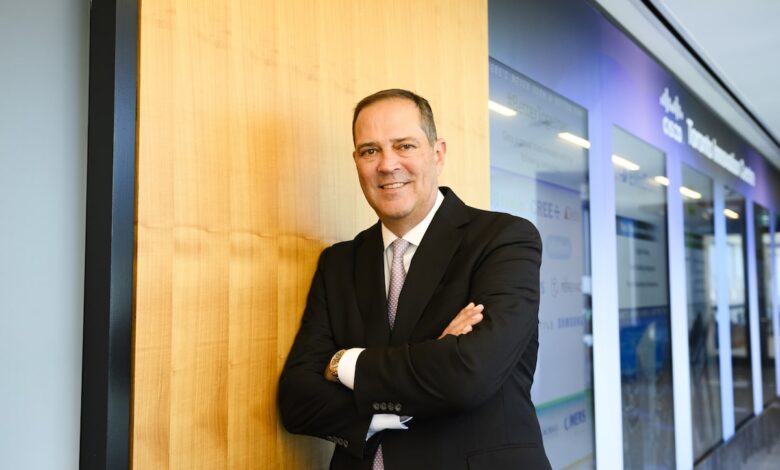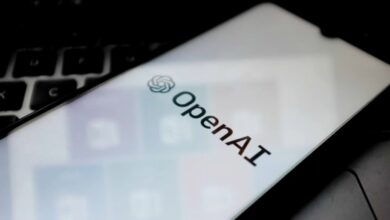Cisco Systems CEO says his company is ready to leverage artificial intelligence

Cisco Systems CEO Chuck Robbins, who joined the company in 1997 and took the helm in 2015, said the company is not going to miss another opportunity with artificial intelligence.Christopher Katsarov /The Globe and Mail
Cisco Systems Inc. chief executive officer Chuck Robbins says the company missed a major opportunity to expand 10 years ago as cloud computing took off. But he insists it won’t make that mistake again with artificial intelligence.
The networking equipment maker was a pioneer during the early expansion of the internet, but was late to invest in infrastructure underpinning the cloud. But the CEO, who joined the company in 1997 and took the helm in 2015, said the company is not going to miss another opportunity.
“With artificial intelligence, we’re not in that position. We’re very well equipped,” Mr. Robbins said in an interview with The Globe and Mail in Toronto Tuesday.
Like many technology companies, Cisco CSCO-Q is betting on AI to propel its software offerings and compete in an increasingly hot cybersecurity market as the networking leader faces more competition in cloud computing.
The shift to software is also part of a wider goal of creating a more stable revenue model, in contrast with the more inconsistent pattern of network equipment sales. Software products can be rolled out faster and give the company revenue that is “more predictable, and a little less stressful,” Mr. Robbins said. So far, the company earns 50 per cent of its revenue from recurring sources.
AI products currently represent a small fraction of the company’s total business, but Mr. Robbins sees that changing quickly.
Cisco is investing in what Mr. Robbins foresees will be a “decade-long run with AI.” The company has built a pipeline of about US$3-billion of orders for AI products, he told analysts in February.
To position itself for a greater focus on AI, Cisco has shed employees and made the largest acquisition in its history to boost its software offerings.
Last quarter, the company laid off 5 per cent of its work force – about 4,200 employees and forecast a US$800-million severance charge that would likely appear in its fiscal third-quarter results, which it will report May 14.
Cisco paid US$28-billion in cash to acquire Splunk, a cybersecurity analytics platform that uses generative AI, to pad out its cybersecurity offerings. The deal closed in March.
“Did we buy them just for growth? I would say no, it’s an incredibly strategic fit first. But they will help us with growth,” Mr. Robbins said. He expects the acquisition to be accretive to the company’s cash flow in Year 1 and its earnings-per-share in Year 2.
The San Jose, Calif.-based company, with a US$190-billion market cap, employs about 2,200 people in Canada.
William Kerwin, an equity analyst at Morningstar, said the acquisition of Splunk will help boost the company’s cybersecurity business, which he said has been “underperforming” in recent years. The investments in AI could help it win customers in the public cloud space, where it has been losing market share to competitors such as Arista Networks, he said.
But he’s doubtful those expansions will warrant a higher valuation for now. For that to happen, “we’d have to see a marked improvement in Cisco’s ability to compete in public cloud and AI environments and market share gains, which we don’t expect,” he said.
In the meantime, the company remains a stable leader in enterprise networks and data centres, growing in the low single-digit range and generating good profits, he said. “While those markets are slower growth, they aren’t going anywhere.”
In the near term, however, the half of Cisco’s income stream which comes from non-recurring sales is experiencing what Mr. Kerwin called a COVID-19 hangover.
During the pandemic, enterprises bought networking equipment to support their employees’ shift to remote work, and many are now still digesting excess inventory. This has led to a drop in revenue over the past few quarters, and analysts expect further contraction in those to come.
In its last earnings the company cut its annual revenue estimates for this year, from a maximum of US$55-billion to a maximum of US$52.5-billion. Mr. Robbins told analysts last quarter the company expects the inventory issues to work themselves out over the next year.
The cut in expectations was also a response to an overall weaker economic climate, and weak demand from telecommunications and cable operators.



